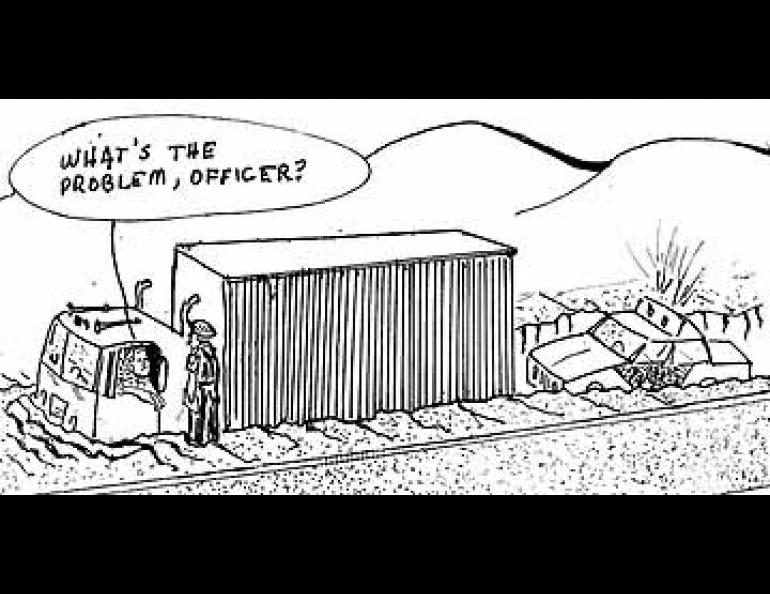
Overweight Vehicles Take Toll on Roads
A recent study by Dianne Marshall of the University of Alaska School of Management in Fairbanks contains some eye-opening statistics about the impact of overweight vehicles on the roads of Alaska. The state presently has a little over 2,500 miles of paved roads, much of which was initially paid for by federal funds, but for which the state bears most of the maintenance cost.
According to Marshall, the American Association of State Highway Officials estimated in the 1950s that it takes the passage of 9,600 cars (assuming 4,000-pound cars with 2,000 pounds on each axle) to equal the effect of one 80,000-pound truck. More recently, the Alaska State Department of Transportation and Public Facilities estimated that it takes 30,000 Ford Escorts to equal the effects of one 80,000-pound truck.
To cite one example that seems to bear this out, in Alaska the northbound lane of the Parks Highway typically wears out faster than the southbound lane. Most of the heavy traffic, of course, derives from the hauling of goods from Anchorage into the Interior. A greater percentage of passenger traffic and unloaded trucks goes the other way.
Marshall also refers to a study done by the state of Mississippi. The object was to measure the roughness of the pavement leading through the entrances and exits to weigh stations, and to compare the figures with those measured on the highway paralleling the ramps (over which the trucks did not pass). The officials gave ratings ranging from 0, for very rough, to 5, for very smooth. They found figures for the access ramps to average 0.5 (rough) and figure for the adjacent highway to range from 3.3 to 3.4 (smooth).
The highways in Alaska are designed and built to withstand a certain amount of what are called "equivalent axle loads," or EAL's. One EAL mile on the Parks Highway is 99 cents. That is, 99 cents of damage is done per mile every time an axle bearing 18,000 pounds passes over it. But this cost can vary from as little as 25 cents per mile in southcentral Alaska to as much as 22 dollars per mile in the Interior.
The allowable gross weight of a vehicle is computed on a formula based, in addition to gross weight, on the number of axles and the distance between them. If a vehicle fails the overweight formula, a permit can be issued for between 15 and 25 dollars, depending on weight (up to 150,000 pounds, the fee is 15 dollars ) which nevertheless allows it to travel on the roads. In light of the fact that this modest fee does not even begin to cover the EAL damage over a few miles, some have claimed that the state is subsidizing the trucking industry. Marshall points out in fiscal year 1986, just over a hundred thousand dollars was taken in by the state Department of Commerce and Economic Development in issuing 6,320 overweight permits. However, the estimated damage to the road system by those same overweight vehicles during the same period was nearly eighteen million dollars!
In an effort to lower allowable weight loads on the Alaska highways, in June of 1986 a review process was set up in which the Department of Transportation and Public Facilities could review permits applications for vehicles which were 125 percent or more over a legal load.





